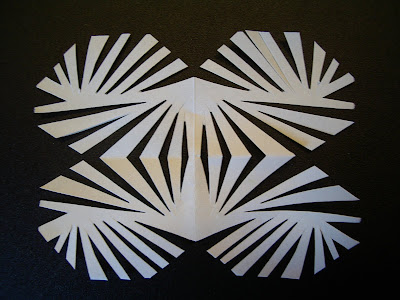

Born in Osaka, on February 10, 1932, Atsuko Tanaka attended several local art schools such as the Art Institute of Osaka Municipal Museum of Art and the Kyoto Municipal College of Art. In 1955, she joined the Gutai group, an avant-garde Post-War artists' movement in Japan. “Gutai” is broken down into two words; “gu” referencing tool and “tai” meaning body, with other translations relating to “concreteness” or “embodiment”. The artists’ collective ignored oppositional categories like Western and non-Western, traditional and modern. In the Gutai Manifesto of 1956, Jiro Yoshiahara wrote: “These objects are in disguise and their materials such as paint, pieces of cloth, metals, clay or marble are loaded with false significance by human hand and by way of fraud, so that, instead of just presenting their own material, they take on the appearance of something else. […] Gutai art does not change the material but brings it to life.” The Gutai Manifesto expressed a fascination with the beauty that arises when things become damaged or decayed. The beliefs of the Japanese artistic group had a worldwide impact from the late 1950s to the early 1970s.
In 1956, Atsuko Tanaka created the Electric Dress, made of cords, incandescent light bulbs and neon tubes covered with red, blue, yellow and green enamel paint that flashed every two and a half minutes. It took as long as one year to realize and was considered one of the masterpieces of this century. The art piece was a combination of the traditional Japanese kimono and modern industrial technology. Her inspiration for her signature work was from a pharmaceutical advertisement illuminated by neon lights. The Electric Dress was a response to the sudden changes in the material conditions of the everyday life in the fifties. Tanaka often used general daily life objects such as textiles, door bells, and light bulbs. Finding influence in everyday life objects, she instead proposed a radical approach to conceptualize her ideas. In "Paragraphs on Conceptual Art", Sol LeWitt explains: “In conceptual art the idea or concept is the most important aspect of the work. When an artist uses a conceptual form of art, it means that all of the planning and decisions are made beforehand and the execution is a perfunctory affair. The idea becomes a machine that makes the art.” Most conceptual art can deliberately be controversial in so far as it strives to challenge and question the viewer what is traditionally known about art. This form of art examines the involvement of the spectator and his reactions to these conceptualists adeas. Experimentation and innovation became fundamental to her artistic practice. In the 2000s, her work was displayed at the Grey Art Gallery, in New York City, and then at the Morris and Helen Belkin Art Gallery in Vancouver. Both focused on Tanaka's Gutai period, showing videos and documentation of the movement. A team of professional took a month to reconstruct the Electric Dress for the exhibitions. Her work is part of important public collections, including that of New York's Museum of Modern Art.
MG































